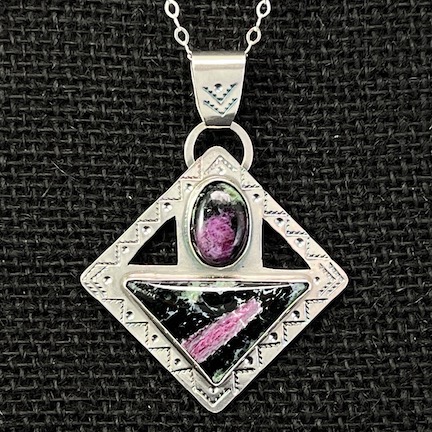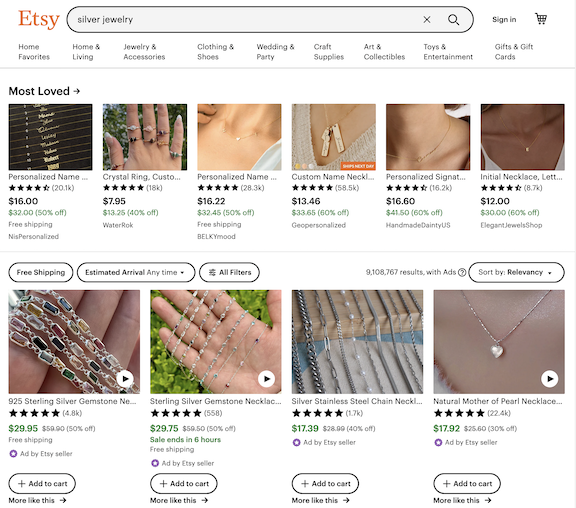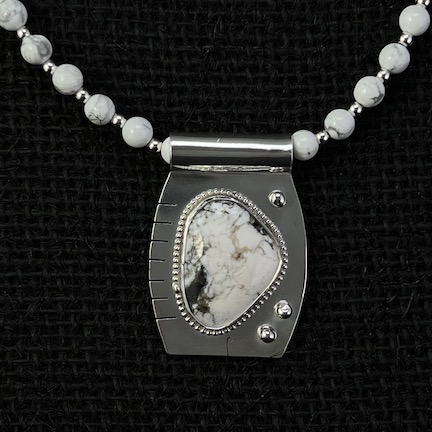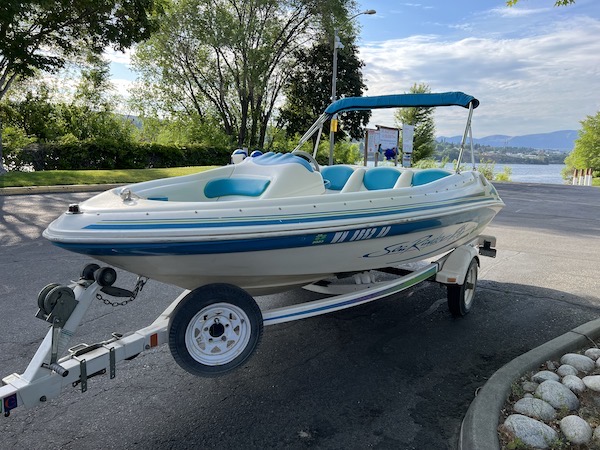Going from working with words to working with my hands.
For years, my creativity has always centered around writing. I started writing in my early teens — fiction, back then — and managed to turn my writing skills into a career starting in the early 1990s. I wrote books and articles, mostly about how to use computers. Later, I wrote about flying and, most recently, about boating. And, of course, I’ve had this blog for nearly 20 years.
Building Solutions
But it was around 2014 that I started branching out into other creative endeavors — actually making things with my hands. It started when the building that would become my home was under construction and I had a need to make things for it. I think the first thing I might have made for the inside of my shop was my workbench, a sturdy affair made of 2×4 lengths and plywood. It’s ugly, but it’s sturdy as hell, mostly because it weighs a ton.
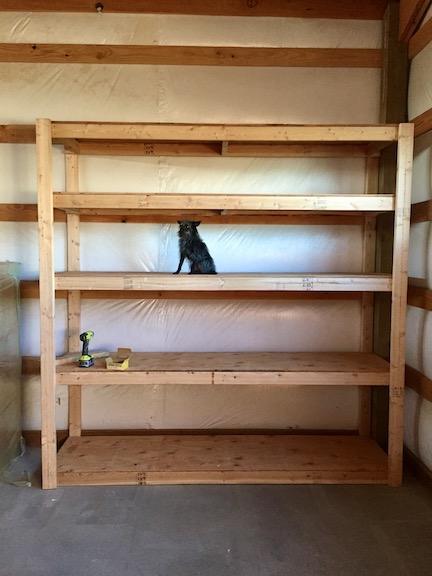
This is the first set of garage shelves I built. It’s 8 feet tall, 8 feet wide, and two feet deep. I put Penny the Tiny Dog on a shelf for scale. I built this on the garage floor and needed help getting it upright.
Since then, I’ve built various other solutions for needs I’ve had, including a number of other work surfaces, storage shelves for my garage and garden shed, and three chicken coops. (It was the third coop, a 4 x 8 foot building with a metal roof that’s large enough to walk into and has four perches, six nests, and a brooding area, that finally did the trick.)
I did a bunch of the work necessary to build or finish my home, too. I wired the whole place, laid down Pergo laminate flooring and tile, built stub walls and a shower stall, constructed deck rails for my outside deck and inside loft, put down the Trex decking on my 600 square foot deck, and added trim around doors and walls. More recently, I worked on a bathroom project that required me to lay out plumbing drains and vents, install insulation, and put up paneling. Although none of these activities called for much creativity, they still involved making things with my hands.
Along the way, I’ve accumulated a pretty respectable collection of power tools — certainly more than my father, stepfather, or wasband ever had. I have a chop saw and a table saw. I have an impact driver, three drills, and a pair of battery operated screwdrivers. I have a circular saw, a reciprocating saw, and a jig saw. I have an angle grinder and a Dremmel. I have two nail guns and a big compressor with enough hose to reach anywhere in my home or garage from the garage. And hand tools! I have just about everything I need. As my wasband used to say, “Any job is easy when you have the right tool.” Hell, yes!
And I’ve come to realize, after nearly 10 years of doing this kind of work, that I like it.
Making Jewelry
Elsewhere in this blog, I’ve already discussed how I got started making jewelry so I don’t want to rehash that here. Instead, I want to talk about how making jewelry makes me feel and why it has become a part of my life.
I look at jewelry making as a combination of challenges:
- The engineering challenge is to come up with a design that physically works. For example, a pendant that includes a stone must have the features necessary to hold the stone securely in place. It must have a bail to hang it from a chain or other necklace. It must be balanced so it doesn’t hang awkwardly from its bail.
- The aesthetic challenge is to come up with a design that looks good. What design elements can I include? Which stone will I work with? How will the overall design complement the stone?

This piece on includes two ruby in zoisite stones. It was entirely handmade from sterling silver sheet, bezel strip, and wire. The skills I used to make it include cutting, piercing, filling, stamping, shaping, and soldering the metal. As for tools — well, it took a lot more tools than I could take with me in my travels.The skills challenge is to be able to create the piece of jewelry I’ve designed using the silversmithing skills I have or am building. Those skills include cutting, filing, texturing, and soldering metal. My skills improve with every piece of jewelry I make, but they’re limited, in part, by the tools I have available. (I have a full set of jewelry making tools in my home-based studio, but I’m very limited when I travel.)
It’s these three challenges that make jewelry making a rewarding activity for me. There’s always something new to try. There’s aways a skill to build or hone. I will never be an expert, although I will get better and better at what I do just by doing it.
Making Jewelry for Sale
When my seasonal flying work was earning enough income to support me, making and selling jewelry was a “side gig” and it didn’t matter much whether I made more money than I spent on materials and equipment. But with my retirement this year, that has changed. I’m now treating my jewelry business more seriously as source of income. That means making more (and selling more) jewelry.
I’m fortunate in that I have several avenues for selling and they’re all pretty good. Some are better than others. About a month ago, one of my wholesale clients pretty much cleaned out my inventory of pendants, leaving me with slim pickings for my online shop and a lot of work to do before my next art show. That show is coming up in about 10 days, so, as you might imagine, I’m hustling to make more inventory.
The challenge now is to keep my creativity level up and not just make different versions of the same item. I do that, too — it’s quick to be able to make certain designs in “batch mode” — but it also takes a bit of the fun out of making. (See the second bullet point above.)
Lately, I’ve been very busy with garage projects, but for the next 10 days, I’ll try to spend 4 to 8 hours a day in my studio. (Fortunately, it has an air conditioner, which I’ll definitely need with temperatures getting into the 100s for the next few days.) I’ll work primarily on pendants, which I’m so short on, but will also try to get some earrings made. In the evening, while I’m relaxing with my pups upstairs, I’ve been making the beaded necklaces that coordinate with the pendants; I’ve made four in the past three days.
I have two back-to-back shows in Leavenworth, WA, including a five-day show for Labor Day weekend. Then I might do a half-day show in Twisp before taking whatever inventory is left to my wholesale customer in Winthrop and a gallery in Twisp. By then, it’ll be pretty close to the end of my stay at home and the start of my travels.
On the Road
Will I make jewelry while I’m away?
It was easy when I traveled with the cargo trailer I turned into a mobile jewelry studio. I could camp out in the desert all winter and spend as much time as I liked inside it with just about every tool I needed within reach. But I’m not traveling with the cargo trailer anymore. These days, I’m on a boat and space is very limited.

Another ruby in zoisite piece, but wire-framed. I can make this kind of pendant anywhere and it still sells well, but I’m bored with it.
The main challenge will be to put together a set of tools and materials that’ll keep me producing without taking up too much space. The wire work I used to focus on is extremely portable, but I’m kind of sick of doing that. Beading is also something I can do anywhere, but even the beads take up a surprising amount of space so I’ll need to limit what I bring along.
I’d like to be able to keep fulfilling online shop orders as I travel, but that means taking all of my inventory with me. That’s not a huge deal since jewelry is relatively small and I have a good storage case to keep it all in. I’d also like to be able to set up new wholesale accounts along the way — but that means having enough inventory to sell. And that means making while I travel.
So the answer is yes, I will make jewelry as I travel. I just don’t know how much. The next 12 months should be quite a challenge.

